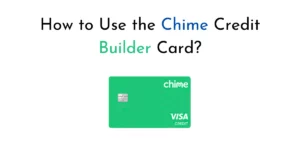You’ve done the math, and you know a low-rate credit card is the smarter way to borrow. But sometimes, it can be hard to find just the right card. That’s why you should keep reading—we have some tips for nabbing that low-rate card and making your debt more manageable.
First things first: a low-rate card isn’t just about finding the lowest rate out there—it’s about finding one that works for you. Different cards have different requirements and conditions, so it’s important to understand what type of credit score, income level, and other qualifications each card requires in order to maximize your chances of getting approved and nabbing that low rate.
We’ll also cover how you can use a few smart strategies to take advantage of incentives that come with certain credit cards to help you save even more on interest. Ready? Let’s go!
1. Understanding Credit Cards & Interest Rates
Searching for a low-rate credit card can be overwhelming. After all, there are so many different kinds of cards out there and each one offers a different combination of interest rates, rewards, and fees. So, how do you make sure you’re getting the best deal possible?
First off, let’s talk about interest rates. Credit cards charge two types of interest: an introductory annual percentage rate (APR) and an ongoing APR. The introductory APR is the lower rate given to you when you first open the card and usually applies for a set period of time like 6 months or 1 year. The ongoing APR is what your card charges after the promotional period ends.
It’s also important to understand how compound interest works when calculating debts on a credit card. Compound interest is interest charged on both the principal balance and accumulated interests—which means paying it off quickly can help you save money in the long run.
By understanding these basics, you will be able to compare different cards more reasonably according to your needs and find that low-rate card that’s perfect for you.
2. Strategies to Achieve Low-Rate Credit Cards
Low-rate credit cards can be a great way to help you manage your debt, save money and even improve your credit score. The key is to know the strategies for nabbing one. Here are some tips:
- Research the Market: Research what low-rate cards are available on the market and compare terms, rates, and fees associated with each one. Find the ones that have no annual fee or offer rewards programs and cash-back options.
- Understand Your Credit History: Check your credit report and understand your current credit score to figure out which type of card you’re eligible for. If you have excellent credit, you may be eligible for a better low-rate card with more perks.
- Read the Fine Print: Once you’ve chosen your card, read all of the terms and conditions carefully to make sure it’s actually a good deal for you in the long run. It’s important to understand all of the fees associated with using the card such as balance transfer costs or over-the-limit fees.
Once you’ve done your research and chosen a card that works for you, it’s time to apply! So if you’re looking for ways to manage debt or simply want access to extra funds when needed, low-rate credit cards might be just what you need.
3. Comparing & Contrasting Credit Card Offers
There are tons of credit cards out there, which can make choosing the right one feel like a daunting task. But don’t worry—you can easily narrow down your choices and find the perfect card for you by taking the time to compare and contrast offers.
The most important thing to consider is the interest rate. Banks will offer different rates, sometimes as low as 0% if you qualify, which makes it easier to get ahead of any debt you may have accrued in the past. Take the time to look at each card’s Annual Percentage Rate (APR), so that you know exactly what type of interest rate you’ll pay on new purchases or even balance transfers.
Another factor to consider when comparing offers is the rewards program and bonus points associated with different cards. Some rewards cards might have no annual fee but offer points back on select purchases or flights. Others might have an annual fee, but offer better overall rewards in return—decide whether or not any benefits outweigh potential fees before making a choice.
Finally, compare all basic features such as free balance transfers, fraud protection, customer service options, and more before deciding which card is best for you. That way you can be sure that your new credit card will meet all of your needs and financial goals!
4. Factors That Determine Your Interest Rate
When you’re looking to nab a low-rate card, there are a few factors that determine your interest rate. Understanding them can be helpful in finding the best card for you.
Credit history
Your credit history is one of the biggest things that affect your interest rate. Understanding how credit works and keeping up with your payments is key to maintaining a good credit score. Good credit can give you access to cards with lower interest rates, and ones with more rewards and higher limits.
Credit limit
A higher credit limit may give you access to lower rates, especially if you’re planning on making large purchases. All in all, lenders look at several factors when determining your interest rate, so make sure you understand what they are before applying for any card.
Credit utilization ratio
Your credit utilization ratio (the amount of available money you borrow on your card) also plays a role in affecting your rate. It’s best to keep your ratios low—aim for no more than 30% of your overall available credit limit—to get an optimal interest rate when applying for any new cards.
5. Common Fees & Benefits Associated With Low-Rate Credit Cards
Considering getting a low-rate credit card? You should know that there are common fees and benefits associated with these cards. Depending on the card, you may see:
Annual Fees
Some low-rate credit cards come with an annual fee. This is a fee you’ll have to pay once a year to use the card. These fees can range anywhere from $0-$500, but don’t let the fee deter you from getting the card if it has great features and rewards. The value of the rewards may outweigh that annual fee in the end.
Interest Rates
The primary benefit of a low-rate credit card is usually its lower-than-average interest rates. Low rate potentials usually fall between 8-15%, which is lower than average by comparison to other cards, meaning you may be able to save in terms of interest costs if you carry a balance on your card each month.
Balance Transfer Fees
Some low-rate credit cards also offer balance transfer fees, which may help with managing your debt more effectively as opposed to making monthly minimum payments on your existing credit cards — this can help reduce stress and debt over time, as long as you keep your balances paid off in full each month on the new card.
Be sure to read all of the fine print associated with any balance transfer offer before committing.
6. How to Take Advantage of Low-Rate Cards
Low-rate cards can be an excellent way to save money, but how do you make the most of them? You’ll want to do your research and shop around for the best deal. Here are a few pointers to help you nab a low-rate card and get the most out of it:
Research Different Cards
When it comes to choosing a low-rate credit card, doing your homework pays off. Compare different banks and their offers, and think carefully before accepting any deals. Consider things like APR, rewards programs, annual fees, balance transfer offers, and any other features in order to find the best fit for your needs.
Look Out For Introductory Rates
If you’re offered an introductory rate on a credit card, take full advantage of it while it lasts! Low rates will often apply only during an initial period before reverting back to a higher rate after this period is over. Be sure to check what the adjusted rates will be once that period ends.
Take Advantage of Rewards Programs
Low-rate cards usually come with rewards programs attached. These can provide additional perks such as cashback or discounts on certain products and services if you hit certain spending thresholds each month or year. It pays to look for one with a rewards program that suits you.
By looking around for low-rate credit cards that offer you great value combined with rewards programs, you’ll put yourself in a better financial position in the long run when compared with other options on the market.
Conclusion
The key to nabbing the best low-rate card deals? Educate yourself on what’s out there and make a calculated decision. You can start by understanding the different types of cards available, looking into their rates and fees, comparing different cards to find what best suits your needs, and then applying for the card. Calculate the true cost of borrowing to make sure you’re getting the most bang for your buck.
By doing all of this research, you will be able to find a low-rate card that is right for you and your financial situation. And you can use this card to your advantage by saving yourself from high-interest rates and getting the most from your money. So, start your search and nab the best low-rate cards!



